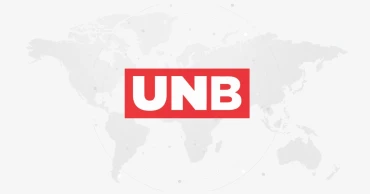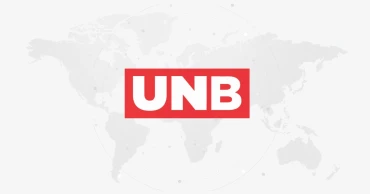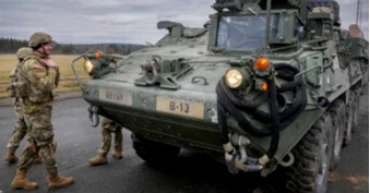tanks
Poland asks Berlin to OK Ukraine tanks; Kyiv targets graft
Poland has officially requested permission from Germany to transfer its Leopard 2 battle tanks to Ukraine where they can help fight Russia's invasion, Polish Defense Minister Mariusz Błaszczak said Tuesday.
German officials confirmed to the dpa news agency they had received the application and said it would be assessed “with due urgency.” German Foreign Minister Annalena Baerbock said Sunday that Berlin, which builds the tanks, wouldn’t seek to stop Poland from providing the high-tech armor to Kyiv.
The development came as Ukrainian authorities moved to crack down on alleged corruption, with almost a dozen senior officials departing Tuesday.
Błaszczak, the Polish defense minister, appealed to Germany “to join the coalition of countries supporting Ukraine with Leopard 2 tanks” — a reference to recent pressure on Berlin to send some of its own tanks. Germany has hesitated to take that step, despite Ukraine's pleas. The tank is adaptable to many types of combat situations.
"This is our common cause, because it is about the security of the whole of Europe!” Błaszczak tweeted.
NATO Secretary General Jens Stoltenberg on Tuesday called for the speedy delivery of new weapons to Ukraine, where a broad battlefield stalemate is expected to give way to new offensives in the spring.
“At this crucial moment in the war, we need to provide Ukraine with heavier and more advanced systems, and we need to do it faster,” Stoltenberg said Tuesday after talks with German Defense Minister Boris Pistorius in Berlin.
Polish officials have indicated that Finland and Denmark are ready to join Warsaw in sending Leopards to Ukraine. Poland wants to send a company of the tanks, which means 14 of them, but they would barely make an impression in a war that involves thousands of tanks. If other countries contribute, Warsaw reckons, the tank detachment could grow to a brigade size.
Read more: Ukraine faces grim start to 2023 after fresh Russian attacks
In Kyiv, meanwhile, the deputy head of Ukraine’s presidential office quit Tuesday after President Volodymyr Zelenskyy pledged to launch a staff shake-up amid high-level corruption allegations.
Kyrylo Tymoshenko asked to be relieved of his duties, according to an online copy of a decree signed by Zelenskyy and Tymoshenko’s own social media posts. Neither gave a reason for the resignation.
Deputy Defense Minister Viacheslav Shapovalov also resigned, local media reported, alleging his departure was linked to a scandal involving the purchase of food for the Ukrainian Armed Forces. Deputy Prosecutor General Oleksiy Symonenko quit, too.
In all, four deputy ministers and five regional governors were set to leave their posts, the country’s cabinet secretary said on the Telegram messaging app.
With Western allies pouring billions of dollars into Ukraine to help Kyiv’s fight against Moscow, Zelenskyy had pledged to weed out corruption which some observers have described as endemic. Zelenskyy came to power in 2019 on an anti-establishment and anti-corruption platform.
Tymoshenko joined the presidential office in 2019, after working on Zelenskyy’s media and creative content strategy during his presidential campaign.
Last year he was under investigation relating to his personal use of luxury cars. He was also among officials linked last September to the embezzlement of humanitarian aid worth more than $7 million earmarked for the southern Zaporizhzhia region. He has denied all the allegations.
Read more: Russia claims progress in eastern Ukraine; Kyiv craves tanks
On Sunday, a deputy minister was dismissed for being part of a network embezzling budget funds. Ukraine’s infrastructure ministry later identified the dismissed official as Vasyl Lozynsky, a deputy minister there.
Oleksandr Kubrakov, the infrastructure minister, said Lozynsky was relieved of his duties after Ukraine’s anti-corruption agency detained him while he was receiving a $400,000 bribe for helping to fix contracts related to restoring infrastructure facilities battered by Russian missile strikes.
In his nightly video address, Zelenskyy said that Ukraine’s focus on the war would not stop his government from tackling corruption.
“I want to be clear: There will be no return to what used to be in the past,” Zelenskyy said.
The anti-corruption drive is vital if Ukraine wants to advance its application for membership of the European Union. To gain EU membership, countries must meet a detailed host of economic and political conditions, including a commitment to the rule of law and other democratic principles.
Last June, the European Union agreed Thursday to put Ukraine on a path toward EU membership, acting with uncharacteristic speed and unity to pull the embattled country further away from Russia’s influence and bind it more closely to the West.
Ukraine has long aspired to join NATO, too, but the military alliance is not about to offer an invitation, in part because of the country’s corruption, shortcomings in its defense establishment, and its contested borders.
In other developments:
Ukraine’s presidential office said Tuesday that at least five civilians were killed and seven others were wounded in Ukraine over the previous 24 hours. One Russian rocket hit a school in eastern Ukraine, killing one person, Donetsk region Gov. Pavlo Kyrylenko said on Ukrainian TV.
Russian forces also shelled nine towns and villages in the northern Sumy region, which borders Russia, killing a young woman and wounding three other people, local Gov. Dmytro Zhyvytskyy reported on Telegram. He said the casualties all lived in the same house, which suffered a direct artillery hit.
2 years ago
Russia claims progress in eastern Ukraine; Kyiv craves tanks
Russia claimed Friday to have captured a village in its intense, monthslong push toward the eastern Ukraine city of Bakhmut, as military analysts cautioned that tanks that may be sent by Kyiv’s Western allies wouldn't be a magic wand in the almost 11-month war.
Russian Defense Ministry spokesman Igor Konashenkov told a regular media briefing that the village of Klishchiivka, nine kilometers (five miles) south of Bakhmut, had been “liberated.”
The claim couldn't be independently verified, and Ukrainian officials made no immediate comment on the claim.
Read more: Deadly missile strike adds to Ukraine war fears in Poland
Taking Klishchiivka would be only a minor breakthrough, but the Kremlin is hungry for good news from the battlefield after months of setbacks.
Bakhmut, on the other hand, would be a bigger prize. It could allow Russia to disrupt Ukrainian supply lines in the east and threaten other Ukrainian-held cities in the surrounding region.
The war has been largely static during the winter months, according to military analysts, except for some hot spots like Bakhmut and nearby Soledar.
The Kremlin’s forces have kept up their long-distance shelling of Ukrainian targets, hitting key infrastructure and civilian areas, while probing Ukrainian defenses in the east.
The Ukrainian presidential office said Friday that at least five civilians were killed over the previous 24 hours, while six others were wounded, as Russian forces shelled seven regions in the country’s south and east.
Ukrainian troops repelled Russian attacks near a number of settlements in the eastern Donetsk and Luhansk regions, the Ukrainian General Staff said in a report.
Read more: Russian missiles cross into Poland during strike on Ukraine, killing 2
John Lough, an Associate Fellow in the Russia and Eurasia program at the Chatham House think tank in London, said that the Ukraine battlefield situation is “inconclusive,” with a renewed Russian push expected in the spring.
The war is “quite delicately poised,” he told The Associated Press.
Ukrainian President Volodymyr Zelenskyy has pleaded with Western allies to send tanks that would help punch through Russian lines, and Western countries were discussing that possibility at a meeting in Germany on Friday. The United Kingdom said last week that it would provide Challenger 2 tanks.
Marina Miron, of the Defense Studies Department at King’s College London, said that tanks are useful, but lots of factors need to be taken into account.
Those factors include how many tanks will be sent, what condition they are in, how Ukrainian crews will be trained, when the tanks will be delivered and how the Ukrainians keep them supplied.
Sending tanks is “more of a political gesture” than something that will change the complexion of the war, Miron told the AP.
2 years ago
Defense leaders meet amid dissent over tanks for Ukraine
Defense leaders are gathering at Ramstein Air Base in Germany Friday to hammer out future military aid to Ukraine, amid ongoing dissent over who will provide the battle tanks that Ukrainian leaders say they desperately need to recapture territory from Russia.
U.S. Defense Secretary Lloyd Austin and Army Gen. Mark Milley, chairman of the Joint Chiefs of Staff, are expected to discuss the latest massive package of aid the U.S. is sending — which totals $2.5 billion and includes Stryker armored vehicles for the first time.
But broader hesitation over sending tanks to Ukraine has roiled the coalition, as Germany facees mounting pressure to supply Leopard 2 tanks to Kyiv, or at least clear the way for others — such as Poland — to deliver German-made Leopards from their own stock.
The U.S. has also declined, at least so far, to provide M1 Abrams tanks, citing the extensive and complex maintenance and logistical challenges with the high-tech vehicle. The U.S. believes it would be more productive to send Leopards since many allies have them and Ukrainian troops would only have to get trained on that one, versus needing far more training on the more difficult Abrams.
The United Kingdom announced last week that it will send Challenger 2 tanks, and has said it's a natural progression of military aid to Ukraine.
At a Pentagon briefing Thursday, spokeswoman Sabrina Singh said the Leopard and Challenger aren’t comparable to the Abrams because the Abrams is much harder to maintain and wouldn’t be a good fit.
“It’s more of a sustainment issue. I mean, this is a tank that requires jet fuel, whereas the Leopard and the Challenger, it’s a different engine.” The Leopard and Challenger are “a little bit easier to maintain,” Singh said. “They can maneuver across large portions of territory before they need to refuel. The maintenance and the high cost that it would take to maintain an Abrams — it just doesn’t make sense to provide that to the Ukrainians at this moment.”
Read more: NATO vows to aid Ukraine ‘for as long as it takes’
The package of aid being sent by the U.S. includes eight Avenger air defense systems, 350 Humvees, 53 Mine Resistant Ambush Protected (MRAP) vehicles, more than 100,000 rounds of artillery ammunition and rockets, and missiles for the High Mobility Artillery Rocket System. It was announced Thursday by the Pentagon.
Germany’s new defense minister, Boris Pistorius, who took office just an hour before he met with Austin on Thursday, is among those likely to attend the Ramstein meeting. Referring to the tanks, he told ARD television he was “pretty sure we will get a decision on this in the coming days, but I can’t yet tell you today how it will look.”
It wasn't clear if the tank issue came up during his initial session with Austin. During brief comments before the meeting began, Austin said, "we’ll renew our united commitment to support Ukraine’s self-defense for the long haul,” but didn’t mention any specific new equipment.
Nearly 11 months into the Russian invasion, Ukrainian President Volodymyr Zelenskyy has expressed frustration about not obtaining enough weaponry from the Western allies.
Speaking by video link on the sidelines of the World Economic Forum’s annual meeting in Davos, Switzerland, Zelenskyy offered a veiled critique of major supporters such as Germany and the U.S. that have hesitated about sending tanks.
Bemoaning a “lack of specific weaponry,” he said, through an interpreter, “There are times where we shouldn’t hesitate or we shouldn’t compare when someone says, ‘I will give tanks if someone else will also share his tanks.’”
German officials have conveyed their hesitancy to allow allies to give Leopards unless the U.S. also sends Ukraine the Abrams, according to a U.S. official who wasn’t authorized to comment and spoke on condition of anonymity. But there have been no signs that the U.S. decision to not send Abrams is shifting.
Read more: Deadly missile strike adds to Ukraine war fears in Poland
Milley told reporters traveling with him this week that complex new U.S. training of Ukrainian troops, combined with an array of new weapons, artillery, armored vehicles heading to Ukraine, will be key to helping the country’s forces take back territory that has been captured by Russia in the nearly 11-month-old war.
The goal, he said, is to deliver needed weapons and equipment to Ukraine so the newly trained forces will be able to use it “sometime before the spring rains show up. That would be ideal.”
Under Secretary of Defense for Policy Colin Kahl also said this week that a new phase of the war is shaping up as Russia gets more deeply entrenched, and that Ukraine will need mechanized infantry to break through those lines.
The influx of new weapons, tanks and armored carriers comes as Ukraine faces intense combat in eastern Ukraine around the city of Bakhmut and the nearby salt mining town of Soledar. The battles are expected to intensify in the spring.
2 years ago





